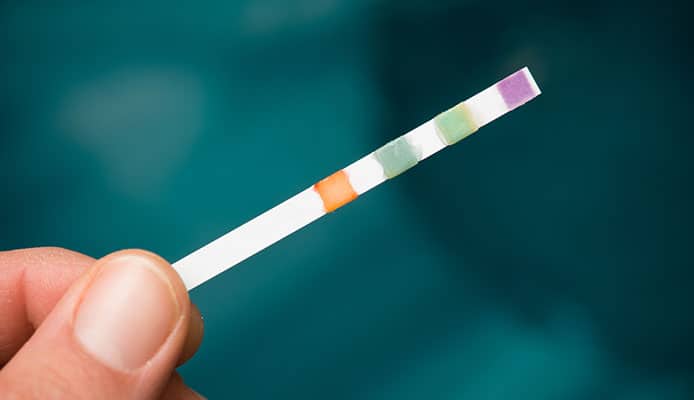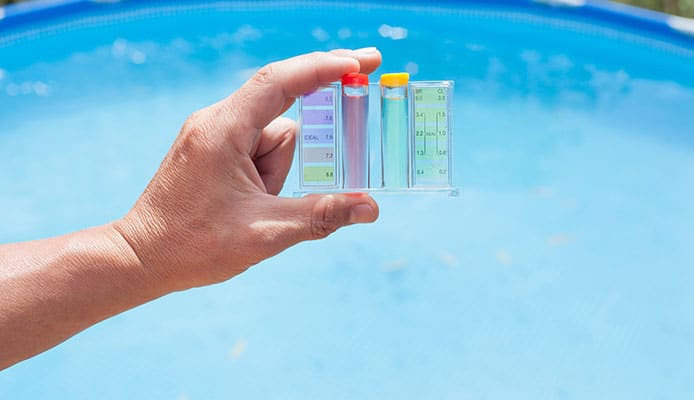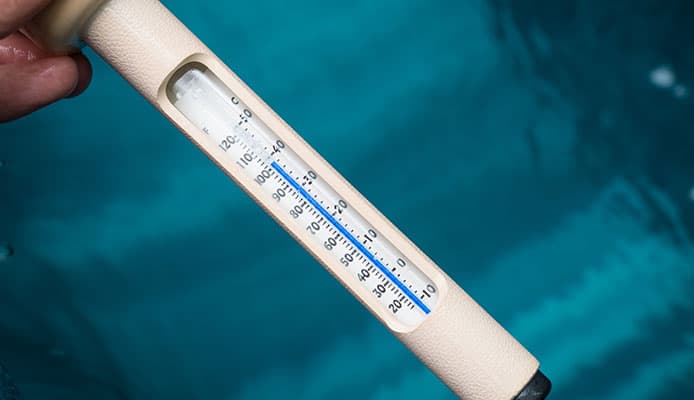
-
1.
-
2.
-
3.
-
4.
-
5.
You want the water in your hot tub to always be germ-free, clean, sparkly, and inviting so you can hop in any time you want to enjoy a relaxing soak. To achieve this, you need to maintain a balanced water chemistry. The problem is that spa water chemistry is always changing.
Keeping it in good condition requires frequent checks of the chemical and mineral levels and the addition of the right chemicals to maintain the ideal level of sanitizer, PH, alkalinity, and hardness. This will keep the water clean, clear, soft, free from pathogens and thus healthy and safe to soak in. It will also prevent imbalanced water problems like foam and calcium buildup, odors, and corrosion.
So which are the best hot tub chemicals? Below, we have reviewed some outstanding spa, hot tub, and jacuzzi chemicals. If you’re a new hot tub owner and wondering what chemicals to use in your hot tub, we also have a guide to help you understand spa water chemistry and chemicals so you can determine what treatment you need to keep your spa water balanced and solve common issues.
Ready to get started? Let’s go.
OUR TOP PICK
Leisure Time Renew Non-Chlorine Shock
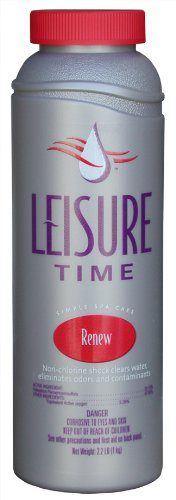
- Stand Out Features - Why We Love It
- Great value and bulk economy packs available
- Compatible with a variety of sanitizers
- Buffered to prevent pH fluctuations
- Dissolves and works quickly
EDITORS CHOICE
Leisure Time Spa Cleaner Bright and Clear

- Stand Out Features - Why We Love It
- Specially made for hot water
- Easy to use and quick acting
- Compatible with many sanitizers
BEST VALUE
Leisure Time Spa Balance Spa Up
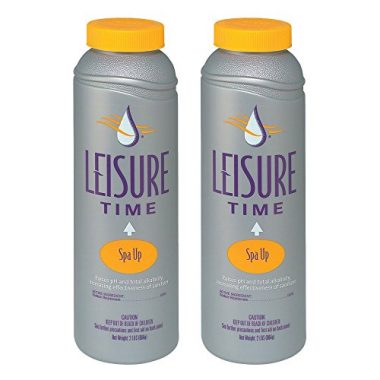
- Stand Out Features - Why We Love It
- Easy to use with simple steps
- Dissolves and acts fast
- Compatible with a wide variety of sanitizers
SpaGuard Enhanced Spa Shock 6#
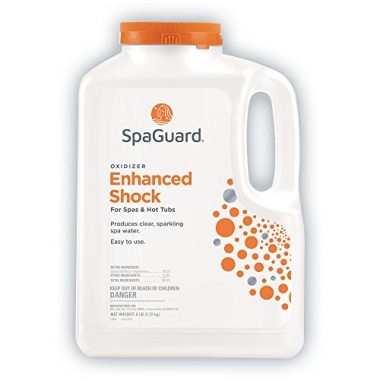
- Stand Out Features - Why We Love It
- Fast acting with long-lasting results
- Multipurpose and pH buffered
- Compatible with most spa systems
- Efficient and cost-effective
SpaChoice 472-3-5081 Chlorine Granules for Spas
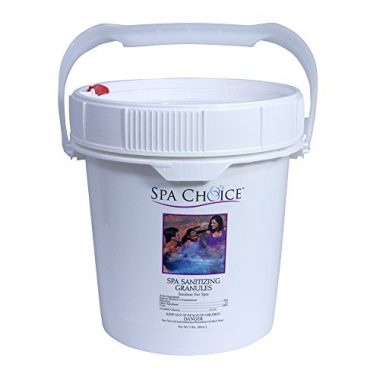
- Stand Out Features - Why We Love It
- Easy to use and dissolves quickly and completely
- Quality and quantity at a great price
- Stabilized spa chlorine and UV resistant
SpaChoice 2-Pack Spa Bromine Tablets 2 x 1.5 lb.
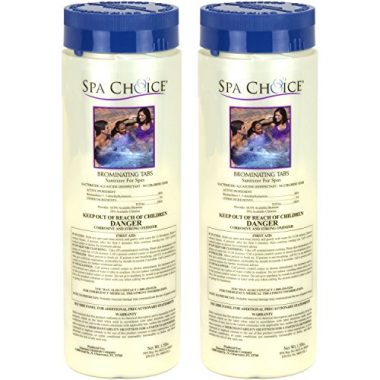
- Stand Out Features - Why We Love It
- Great quality and potency
- Slow dissolving and long lasting
- Great price and value
Leisure Time Spa Disinfectant Brom Tabs
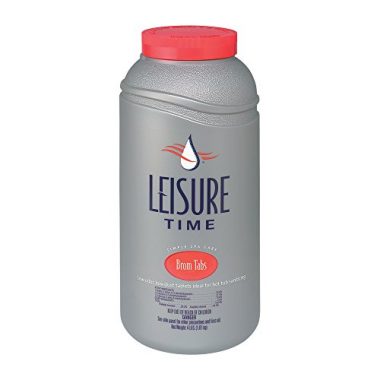
- Stand Out Features - Why We Love It
- Concentrated bromine sanitizer
- Compatible with most feeders and floaters
- Easy to use tablets
Spa Essentials Chlorinating Concentrate Granules
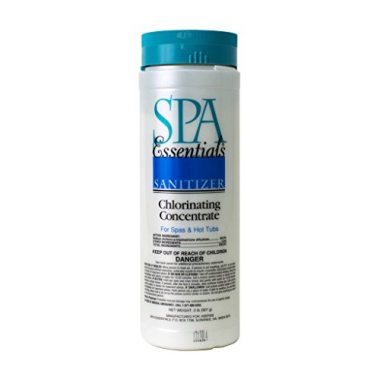
- Stand Out Features - Why We Love It
- Stabilized and long lasting
- Sanitizing and shocking benefits
- Easy to use and fast acting
Oh Yuk Healthy Cleaner
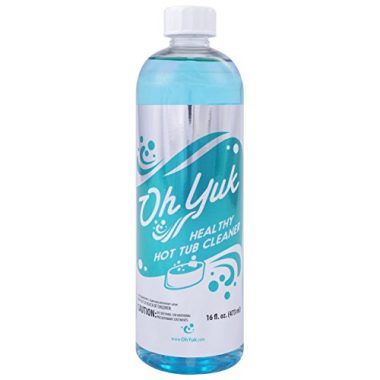
- Stand Out Features - Why We Love It
- Pleasant smelling
- Easy to use
- Powerful and fast acting
Pool & Spa Anti Foam Defoamer Concentrate
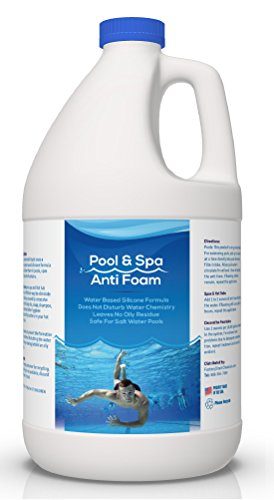
- Stand Out Features - Why We Love It
- Highly concentrated, powerful, and efficient
- No oily or cloudy residue left
- Does not affect water chemistry
- Versatile defoamer and excellent value
How To Choose The Best Hot Tub Chemical – Buying Guide
It is important to choose chemicals that are compatible with your hot tub and its water. The first step in determining what treatments you need is to use test strips to check the water’s sanitizer, alkalinity, PH, and calcium levels. Read on to find out what features to look for, understand ideal water chemistry and how to correct imbalances so you can decide what spa care products should be in your chemical kit.
Ease Of Use
Regular hot tub water treatment is essential and you don’t want to maintain your hot tub to turn into a complicated chemistry project you dread. Treating your spa water should be a quick and easy process. The most excellent hot tub chemicals are effective and easy to use. They have simple steps to follow and come with clear instructions.
Speed
After application, you are supposed to wait a while for the chemicals to circulate and work. The most efficient hot tub chemicals are quick in their action. They shouldn’t take too long to do their job keeping you away from enjoying your spa.
Storage
Chemicals come with risks and storage is a very important factor to consider. They should be well packaged in a locked container that is kids proof.
Safety
Safety is another important factor to consider. The chemicals you choose for your spa should be safe for bathers and user-friendly. Check the labeling for information on side effects such as allergies and follow the provided instructions for safe application.
Type of Tub
The best hot tub chemicals to use are the ones that suit the make and model of your hot tub. Check your tub’s manual to see what the manufacturer recommends and read the label on any chemical you’re considering to ensure you choose hot tub water treatment products that are compatible with your spa.
What is the best Hot Tub Chemical To Use:
Sanitizer
A spa’s warm water is the perfect environment for bacteria and other microorganisms to thrive. Sanitizer is the chemical that disinfects your spa’s water by killing bacteria and other pathogens. The two most popular sanitizers are chlorine and bromine.
Chlorine is inexpensive and fast-acting but has a strong odor and can cause irritation. Bromine is more expensive than chlorine but is more gentle and performs better in warm water. There are also alternative sanitizer systems that are oxygen, silver, and enzyme based.
To keep germs at bay, it is essential to maintain an active level of sanitizer in your hot tub. The ideal level of sanitizer in a hot tub is 1 – 5 PPM. If testing shows the level of sanitizer is too high, let it reduce naturally. If it is too low, add the appropriate amount of chlorine or bromine. Before sanitizing, ensure your tub’s water pH is balanced.
Shock
Even with sanitizer treatments, it is necessary to shock your hot tub to eliminate contaminants that your sanitizer has missed, if the tub has not been used for a while, and after heavy use. A shock is an oxidizing treatment that breaks down and removes contaminants in the water, pipes, and filter that make the sanitizer and filter less effective and cause cloudy and smelly water.
There are non-chlorine oxygen-based shocks and chlorine-based or sodium dichlor shocks. For tubs used regularly, weekly shocks are essential. For those that haven’t been used for a while, shocking a day before use is effective. Ensure the pH is balanced before shocking the water.
pH Balance
The pH level indicates whether the hot tub water is acidic or alkaline/basic. The ideal pH for hot tub water is slightly basic at 7.2 and 7.8. Too low and acidic will corrode your tub and plumbing. Too high and alkaline will cause scale buildup and cloudy water. pH imbalance also reduces sanitizer effectiveness and causes skin and eye irritation.
To determine your hot tub’s<span style=”font-weight: 400;”> pH levels, use a standard spa test strip or pH test kit. If you find that the pH is too low, you can raise the level with sodium bicarbonate. If the pH is too high, you can use a pH down treatment such as sodium bisulfate. Before you balance the pH, it is important to balance the alkalinity first as follows.
Total Alkalinity
Total alkalinity refers to the level of alkaline salts in a spa or hot tub water. The ideal alkalinity level of 80-120 ppm is key to keeping spa water balanced as it affects the water’s pH, hardness, and sanitizer effectiveness. Alkalinity acts as a buffer for the pH level keeping it steady.
In most hot tubs and spas, pH and alkalinity tend to rise and pH reducers are the most used chemicals. This lowers the total alkalinity over time. An alkalinity increaser such as sodium bicarbonate will raise it. Softened water, calcium filters, and sodium bisulfate reduce alkalinity.
Calcium Hardness
Calcium hardness refers to the amount of calcium in spa water or how hard or soft the water is. The ideal range is 150 to 400 ppm. Maintaining ideal alkalinity and pH level usually keeps the water hardness in control but it sometimes becomes an issue.
If the hardness level is too low, the water will draw minerals from the tub and plumbing parts corroding them. If calcium levels are too high, there will be scale buildup and foaming. If testing reveals your tub water is soft, use a calcium booster to increase the calcium level. High levels can be brought down by using scale defenders, calcium filters, and softened water.
You might also like: How To Balance The PH In A Hot Tub
Water Clarifiers
If your spa water foams and becomes cloudy due to pollutants such as body oils and cosmetics, you can use water clarifiers and anti-foam chemicals to get rid of the foam. Clarifiers are polymers that cause tiny particles to coagulate for easy filtration. Scum absorbers float and soak up surface oils and grease. Enzymes are natural scum digesters.
Algae Prevention
Shock and sanitizer treatments are usually effective at keeping algae growth in check. However, it sometimes becomes an issue and requires a hot tub chemical referred to as a spa algaecide to kill it.
FAQs
Q: What Is A Hot Tub Sanitiser?
Q: What Is PPM? (Parts Per Million)
Q: What Is pH?
Q: What Is Total Alkalinity? (TA)
Q: What Is Total Hardness? (TH)
Q: What Is Hot Tub Shock?
Q: What Are The Benefits Of Using Hot Tub Chemicals?
Globo Surf Overview
The best hot tub chemicals keep your tub in tip-top condition and ensure the water is clean and clear to bathe in. With time, the water quality goes down and it becomes difficult to restore the proper chemistry. This is why it is also important to drain, clean, and refill your tub afresh at least every three months.
More Watergear Hot Tube Reviews:
Which of the spa chemicals on our list is your top choice? We would love to read your thoughts or experience with the hot tub chemicals we’ve reviewed! Let us know in the comment box below!


